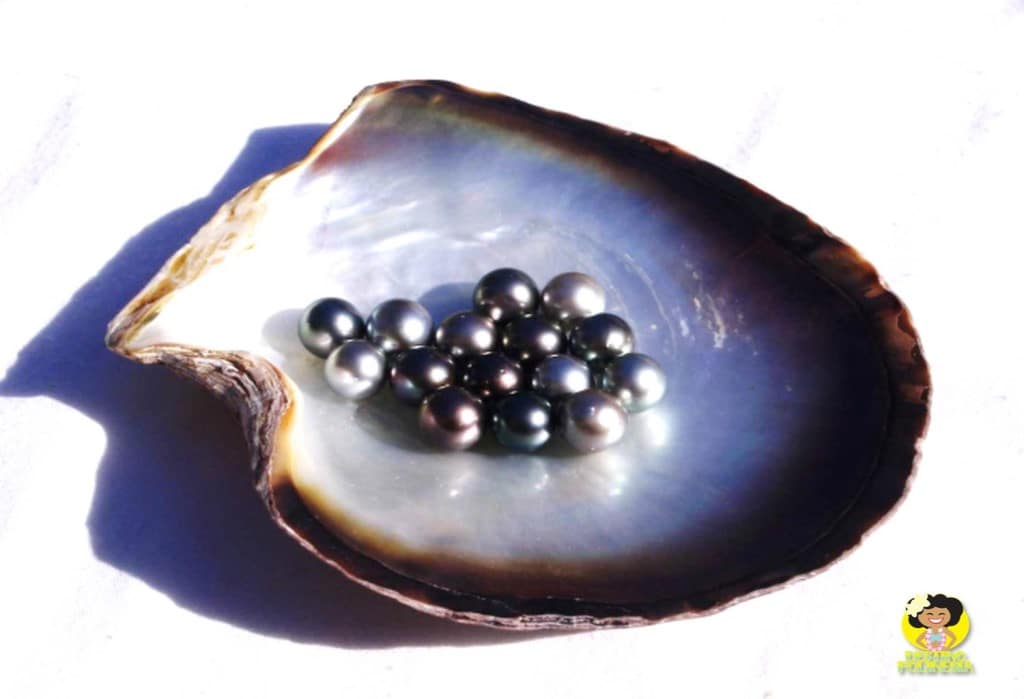Table of Contents
What do you know about Tahitian pearls? What if we say the black pearl? You might be familiar with the term from the movie Pirates of the Caribbean, right? The Tahitian pearl is also known as the black pearl due to its peculiar dark iridescent coloring. In fact, this coloring can only be obtained in the South Seas, which is why the Tahitian pearl is accompanied by an official certificate of authenticity. It is truly outstanding.
In ancient times it was regarded as a symbol of purity and virtue and was highly sought-after in the Middle East and Asia. It was one of the first jewels to be used by mankind for body ornamentation.
The first cultured black pearl was created in a lagoon on the island of Bora Bora in 1961 using grafting techniques originating in Japan. The result of this first experiment was 100% satisfactory and the technique to obtain cultured pearls was extended to a series of islands (Manihi, Marutea and Mangareva) in the Tuamotu archipelago located to the northeast of Tahiti.
Five years later, in 1976, the Tahitian pearl obtained the designation of origin from the Gemological Institute of America, in addition to official recognition of the Tahitian pearl as a unique natural gem, ensuring that it would become a unique icon of the Islands and a coveted gem at international level.

The black pearl represents a major source of revenue for the French Polynesian economy. It is the second most important industry after the services sector for job creation. Successful Tahitian pearl farming requires the intervention of several expert hands and involves a long, meticulous process. It entails close attention throughout the process, and at least 18 months elapse from the moment the oyster spat is collected through grafting, culturing and monitoring to harvesting. The oyster that generates this wonderful gem is a very delicate species and, as noted above, exclusive to the Pacific: the Pinctada margaritifera or the black-lip oyster.
The quality of the pearl depends on three factors:
With respect to the latter, it should be noted that the sobriquet of black pearl attributed to the endemic Tahitian pearl refers to the characteristic tone or sheen of the most coveted examples. However, it should be pointed out that relatively few of these pearls are actually black. In fact, their colors range from green to blue through golden, silver, violet to anthracite black, as noted above, the most sought-after pearl along with rainbow-colored varieties and the mottled green “fly wing” type.
A statistic that puts the exclusivity of black pearls into some kind of perspective is the fact that roughly 30 of every 100 grafted oysters fail to survive the handling and another 25 to 30 reject the seed. Of the approximately 40 remaining, roughly 5 will produce perfect pearls. This represents only 2% of the total oysters cultivated. That is why the lowest average cost of one of these pearls is around $63.

The mystery of the stunning chromatic range of Tahitian pearls is the secret of the oyster that produces them. These outstanding pearls are obtained by the same process used all over the world but their degree of exclusivity is a function of the mollusk species that produces them and of their geographic location. They are formed in the lagoons of French Polynesia.
Pearls are generated when a tiny foreign body is introduced into the oyster and the mollusk’s reaction is to isolate said body. It coats the external agent with a film of nacre to keep it from coming into direct contact with its living tissue. This survival reaction explains how the pearl is formed from numerous extremely fine layers of nacre, also known as mother-of-pearl.

They are very delicate and require special care. According to the experts, they may suffer scratches or grazes if they are stored with other jewels. Store them in a soft cotton bag. They must be cleaned with great care as there are many products that can harm them. You can dilute a drop of detergent in water and rub them very gently, rinse well with clean water and dry them delicately with a soft cloth to finish the process.
Share

I have this money to travel per person

Be the first to leave a comment!
Comments and opinions about The black pearl of Tahiti, discover the jewel of the South Seas
Share your experiences and queries with us, we will be happy to lend a hand. Get in touch here!